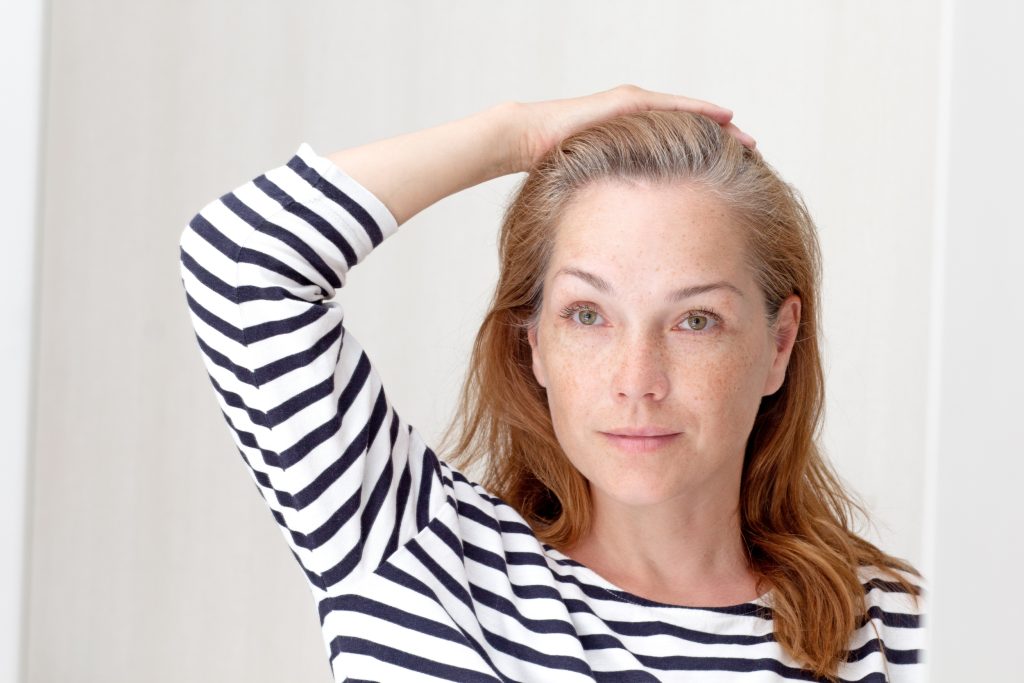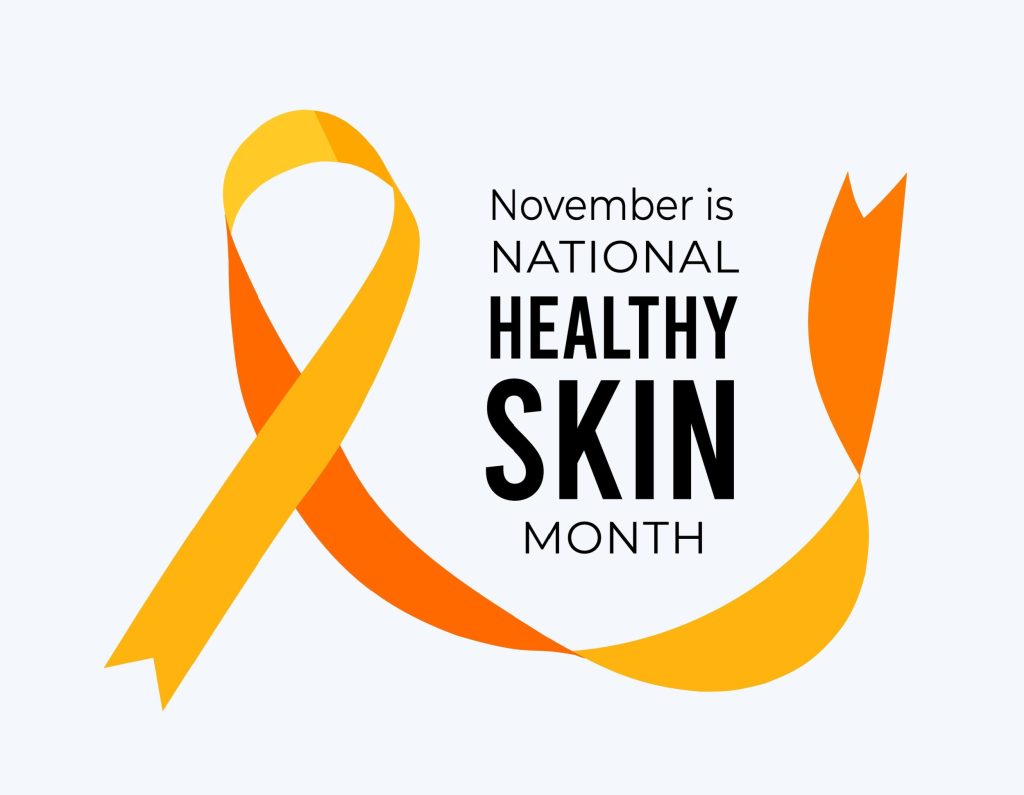
If you’ve ever looked in the mirror and spotted a silver strand or two staring back at you for the first time, you might wonder what’s happening with your hair. Getting gray hair often indicates one of the first signs of aging. Even though nearly every person’s hair will turn gray at some point in their life, it can feel emotional to see those strands of silver. Gray hair is considered a natural part of the aging process, and on average begins during the ages of 30-40. While genetics play a significant role, factors such as stress, nutrition, and environmental exposures can actually accelerate the graying process. The experts at Florida Dermatology and Skin Cancer Centers want to help you understand these influences so you can make choices that make you feel empowered when it comes to your gray hair.
Breaking Down Hair Color
Hair color comes from melanin, which is the same pigment that gives color to your skin and eyes. There are two types of melanin involved in hair color:
- Eumelanin, which creates brown and black shades
- Pheomelanin, which gives red and yellow hues
The exact ratio and amount of these pigments work together to determine whether you’re a blonde, brunette, or redhead. These pigments are produced by specialized cells called melanocytes, located in your hair follicles.
Each hair follicle contains melanocytes that deposit melanin into the hair shaft as it grows. This coloring process happens during the “growth” phase of the hair cycle, scientifically known as the anagen phase.
Hair Phases
Your hair isn’t constantly growing. It follows a natural cycle with three main phases:
- Anagen (Growth Phase) – This is when your hair is actively growing. It can last several years.
- Catagen (Transition Phase) – A short phase where growth slows and the follicle starts to shrink.
- Telogen (Resting Phase) – Hair is no longer growing and will eventually shed. A new hair will begin growing in the same follicle after this.
What Causes Gray Hair?
Melanin is only added to the hair during the anagen phase. Once the hair leaves the follicle and becomes visible, whatever color it has at that point is locked in until it falls out. After roughly 7-15 cycles, the melanin stops regrowing, and your hair will begin losing its color. Enter in gray (or white) hair.
Other factors that cause gray hair include:
1. Genetics
Genetics play a big role in determining when you start to get gray hair. If your parents or grandparents experienced premature graying, there’s a higher likelihood you might too. Research indicates that certain genes like IRF4 and MITF are linked to the onset of gray hair, making it a hereditary trait for many people.
2. Stress
Chronic stress has been linked to premature graying. Stress activates the body’s fight-or-flight response, releasing hormones like norepinephrine, which can deplete melanocyte stem cells in hair follicles. This depletion reduces melanin production, leading to gray hair.
3. Nutritional Deficiencies
Deficiencies in certain vitamins and minerals can contribute to early graying. Low levels of vitamin B12, vitamin D, iron, copper, and zinc have been associated with decreased melanin production. A balanced diet rich in these nutrients can help support overall hair health.
4. Smoking
Smoking has been identified as a significant factor in premature graying. The toxins in cigarettes can damage melanocytes and accelerate oxidative stress (or free radical damage), leading to earlier loss of hair pigment.
5. UV Exposure
Excessive exposure to UV rays can damage hair proteins and pigments. UV radiation accelerates oxidative stress in hair follicles, potentially leading to earlier graying. Protecting hair from sun exposure by wearing hats or using UV-protectant hair products can help lessen this risk.
6. Health Conditions
Certain medical conditions, such as autoimmune diseases (ex., vitiligo or alopecia areata) and thyroid disorders, can affect melanin production and lead to early graying. Managing these conditions with your team of medical professionals may help maintain natural hair color longer.
Can I Stop the Growth of Gray Hair?
Gray hair is absolutely a normal part of aging, and currently there are no effective medical treatments to add pigment back to hair. However, through the use of natural hair colors like henna and synthetic hair dyes, you can help temporarily cover up your gray hair.
If you want to try to keep your natural color as long as possible, try the following:
- Stress Management: Try relaxation techniques like meditation, yoga, or deep-breathing exercises to reduce stress levels.
- Balanced Diet: Consume a diet rich in fruits, vegetables, lean proteins, and whole grains to ensure adequate intake of essential nutrients.
- Avoid Smoking: Quitting smoking can reduce oxidative stress and improve overall health, potentially delaying graying.
- Protect Hair from UV Rays: Use hair products with UV protection or wear hats when exposed to the sun for extended periods.
- Regular Health Check-ups: Monitor and manage health conditions that may contribute to premature graying.
Even with the best of intentions, you may find your hair is turning gray. If you don’t like the appearance, you can always try one of the hair color options mentioned above.
Aside from gray hair, if you are suffering from a head or scalp condition that is affecting your daily life, don’t wait to start treatment. At Florida Dermatology and Skin Cancer Centers, our team of licensed professionals are experts in the field of all hair and scalp conditions. From recurrent dandruff to folliculitis and everything in between, we can help you find an accurate diagnosis for your head and scalp issue and discuss the best treatment options for your condition.
About Us
FLDSCC’s team of providers are experts in diagnosing and treating skin cancers; skin conditions and diseases such as eczema, rosacea, dry skin, rashes, and warts; and chronic skin diseases and infections, while simultaneously tackling aging skin, wound care, and a multitude of other skin, hair, and nail concerns.
Several FLDSCC providers are fellowship-trained in Mohs micrographic surgery, an effective state-of-the-art treatment for most types of skin cancers. Mohs surgery involves minimal discomfort and encourages the greatest preservation of healthy tissue, which means less risk of scarring and superior cosmetic results.
FLDSCC has many convenient locations throughout the state. For more information, visit www.fldscc.com, or call (855) FLD-SKIN.


